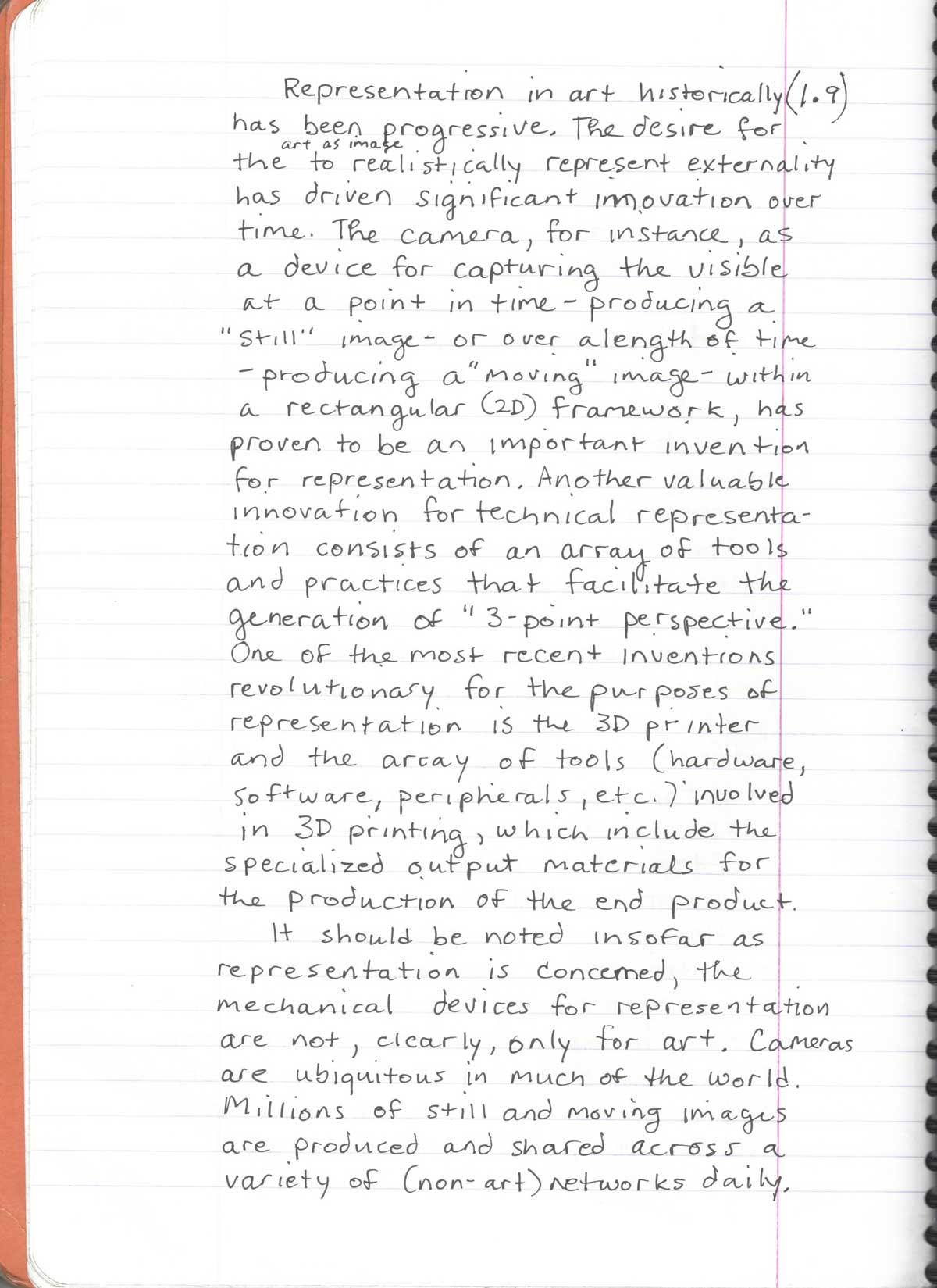[1.9]
Representation in art historically has been progressive. The desire for the art as image to realistically represent externality has driven significant innovation over time. The camera, for instance, as a device for capturing the visible at a point in time – producing a “still” image – or over a length of time – producing a “moving” image – within a rectangular (2D) framework, has proven to be an important invention for representation. Another valuable innovation for technical representation consists of an array of tools and practices that facilitate the generation of “3-point perspective.” One of the most recent inventions revolutionary for the purposes of representation is the 3D printer and the array of tools (hardware, software, peripherals, etc.) involved in 3D printing, which included the specialized materials for the production of the output, the “end product.”
It should be noted insofar as representation is concerned, the mechanical devices for representation are not, clearly, only for art. Cameras are ubiquitous in much of the world. Millions of still- and moving-images are produced and shared across a variety of (non-art) networks daily.
